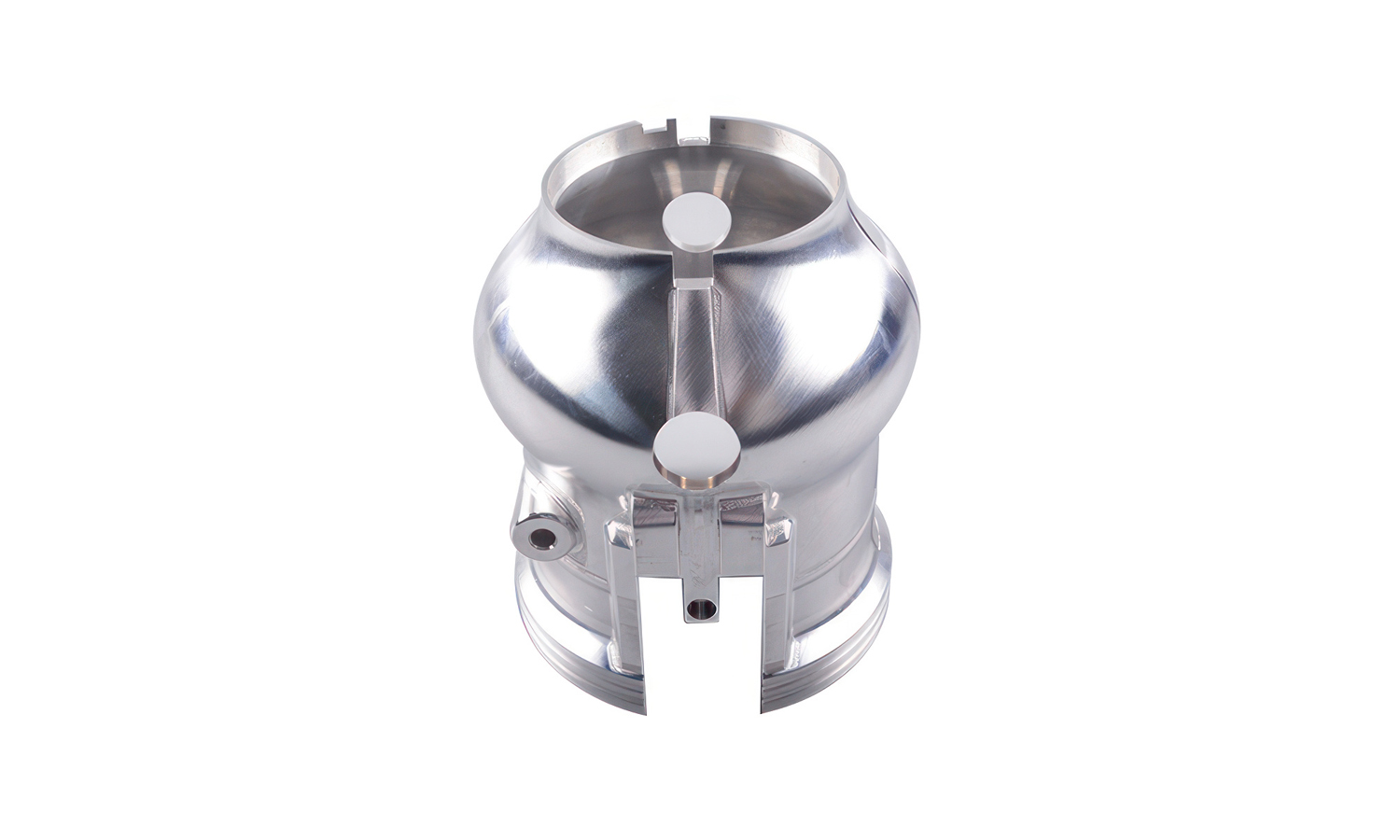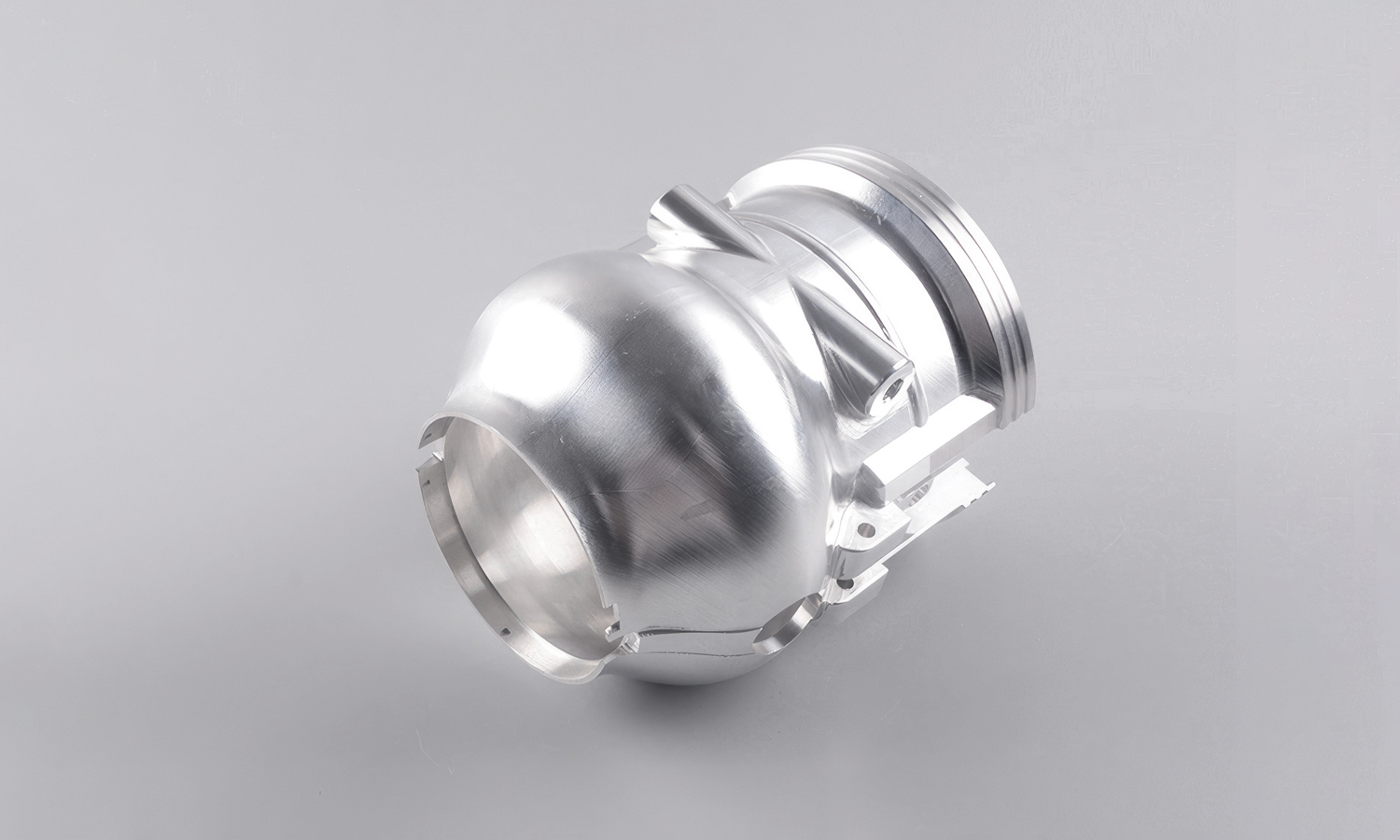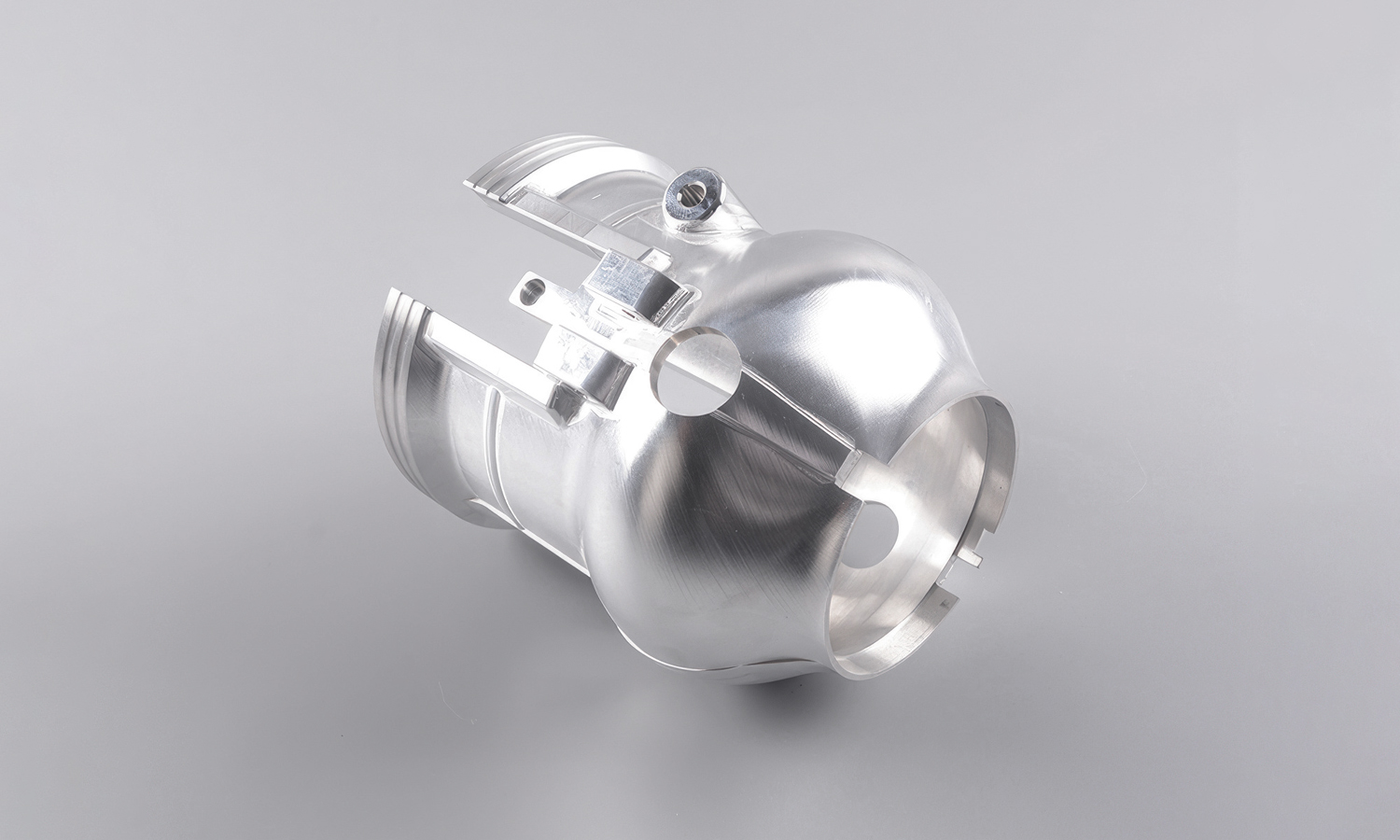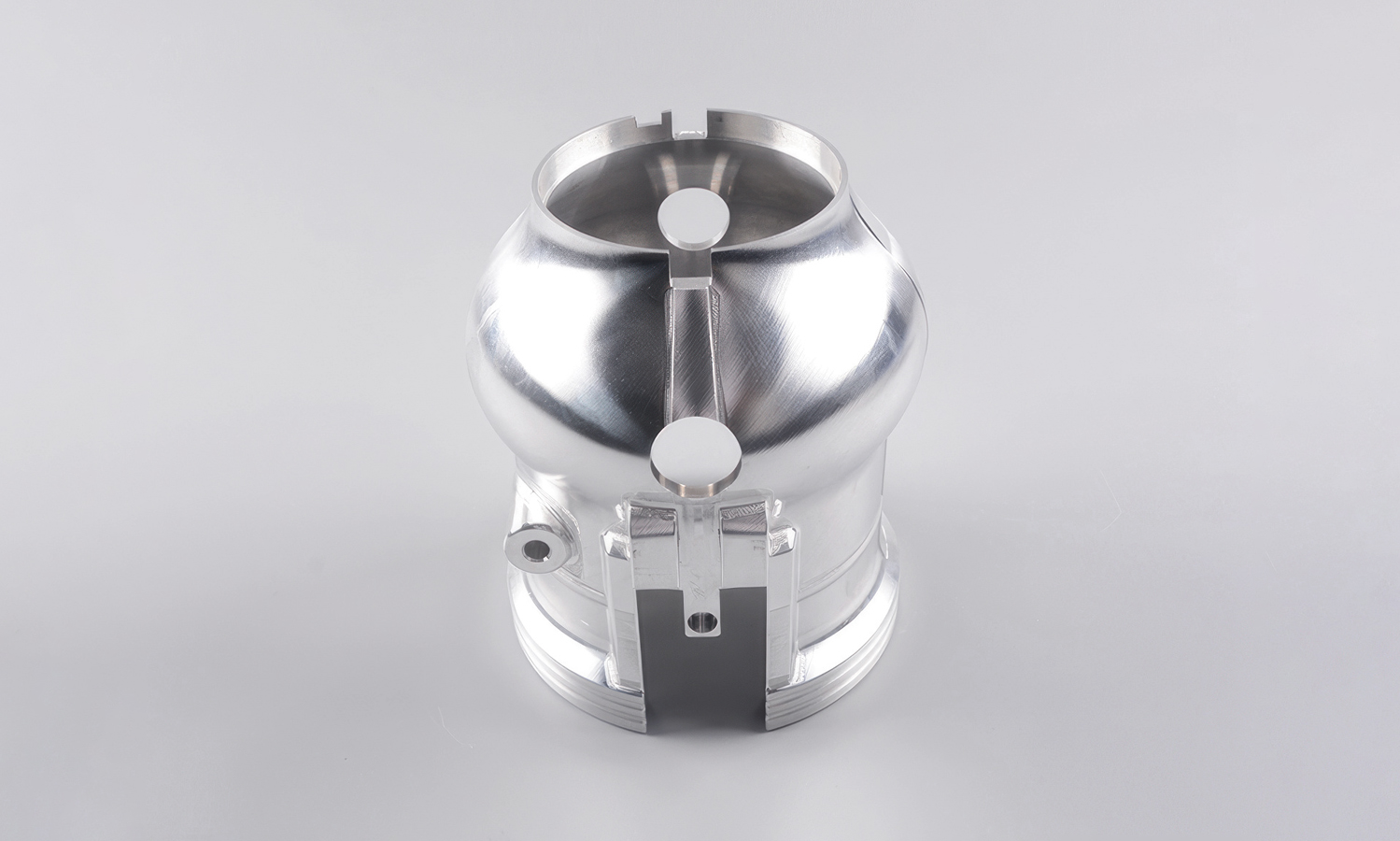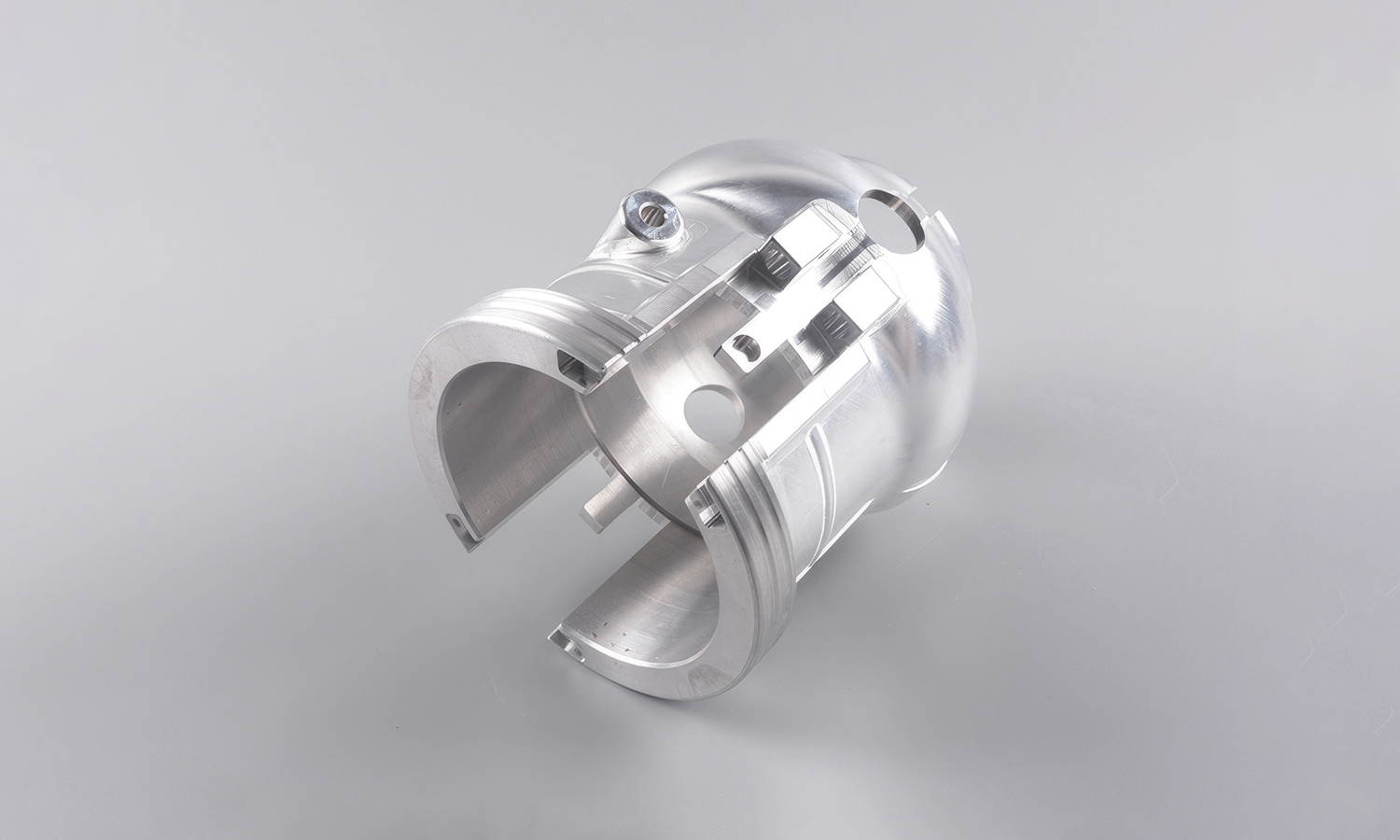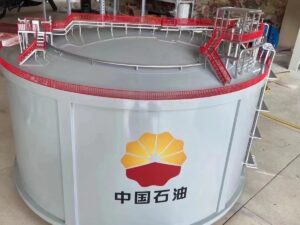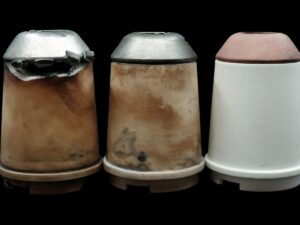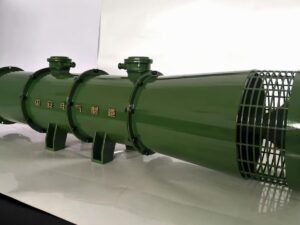- Mimaki 3D Printed Full-color Elder Man Head Miniature
- DLP 3D Printed Elastic Rubber Designer Shoe Surface
Gallery
About Project
In the world of fluid systems and industrial applications, the CNC-machined SS316L Spherical Port Valve Connector stands as a testament to meticulous design and advanced manufacturing capabilities. Engineered for efficiency, durability, and versatility, this connector plays a pivotal role in ensuring the seamless operation of critical systems.
Structural Design: A Blend of Functionality and Form
Crafted from SS316L stainless steel, this connector features a robust cylindrical body with a precisely contoured spherical mid-section. The bulbous design is not merely aesthetic but serves a functional purpose-enhancing stability and sealing within fluid systems by providing a secure fit.
The connector incorporates a circular opening at its top, flanked by protruding flanges designed to lock the part firmly into its designated assembly. A side port with a smaller diameter allows controlled fluid or gas flow, while the lower cylindrical extension acts as a coupling mechanism for adjoining components. The intricate grooves and machined details ensure perfect alignment, preventing leaks and maintaining system integrity.
The spherical port design allows fluid dynamics to be optimized, reducing turbulence and maintaining a consistent flow rate. The SS316L material, known for its excellent corrosion resistance, ensures the part’s longevity even in harsh environments, such as chemical plants or marine systems. Additionally, the polished surface minimizes friction and wear, extending the connector’s operational lifespan.
Functions That Drive Performance
The Spherical Port Valve Connector is versatile in its applications:
-
Flow Regulation: The side port enables precise control of fluid or gas passage, making it ideal for systems requiring accurate adjustments.
-
Sealing Efficiency: The bulbous mid-section improves sealing performance, reducing the risk of leakage.
-
Versatile Coupling: Designed for compatibility with various valves and fluid system components, the connector facilitates smooth integration into complex assemblies.
Surface Finish: Polished Excellence
One of the standout features is its polished surface, achieved through CNC machining techniques. The smooth finish not only adds aesthetic appeal but also enhances functional aspects by reducing surface imperfections that could compromise sealing or flow dynamics. This mirror-like finish underscores the precision and quality synonymous with CNC machining.
Unleash the Potential of CNC Machining with FacFox
FacFox brings advanced CNC machining technology to the forefront, enabling creators and engineers to achieve unparalleled precision and quality in their projects. With expertise in machining stainless steel, aluminum, and other high-performance materials, FacFox delivers tailored solutions to meet diverse industry needs.
Whether you’re designing valve connectors, prototyping machinery parts, or crafting intricate components, FacFox ensures a seamless manufacturing process with exceptional results. Partner with FacFox today and transform your ideas into precision-engineered reality!
Ready to get started? Contact FacFox now and experience the difference CNC machining can make in your creations!
Solution
- Step 1: A raw material blank of SS316L stainless steel, with dimensions slightly larger than the final part, was selected.
- Step 2: The initial rough shape of the connector, including the primary cylindrical and spherical forms, was established through a rough turning or milling operation on a CNC machine. This step was performed to remove the bulk of the excess material.
- Step 3: The internal spherical port and its precise dimensions were machined using specialized ball-end milling tools or potentially a boring operation on the CNC machine. Careful attention was paid to achieving the required surface finish and roundness.
- Step 4: The external features, such as the threaded sections, flanges, and any connection ports, were created using various CNC machining operations like turning, milling, and potentially tapping. Different cutting tools were employed to achieve the specific geometries and tolerances.
- Step 5: Smaller features, such as bolt holes or alignment features, were drilled or milled into the connector as per the design specifications.
- Step 6: The internal surfaces of the spherical port and other critical areas were likely subjected to a finishing process, such as honing or polishing, to achieve the desired smooth surface finish necessary for proper valve sealing and operation.
- Step 7: Any required threads were cut using tapping tools, either on the CNC machine or as a secondary operation. The thread dimensions and tolerances were carefully controlled.
- Step 8: The machined connector was thoroughly cleaned to remove any cutting fluids, chips, or other contaminants from the manufacturing process.
- Step 9: Dimensional accuracy and surface finish were inspected using precision measuring instruments and techniques, such as coordinate measuring machines (CMM) or optical comparators, to ensure the part met the specified tolerances.
- Step 10: Depending on the application, a passivation process may have been performed to enhance the corrosion resistance of the SS316L material. This typically involves immersing the part in an acid solution.
- Step 11: The final part was carefully handled and packaged to prevent damage during storage and transportation.
